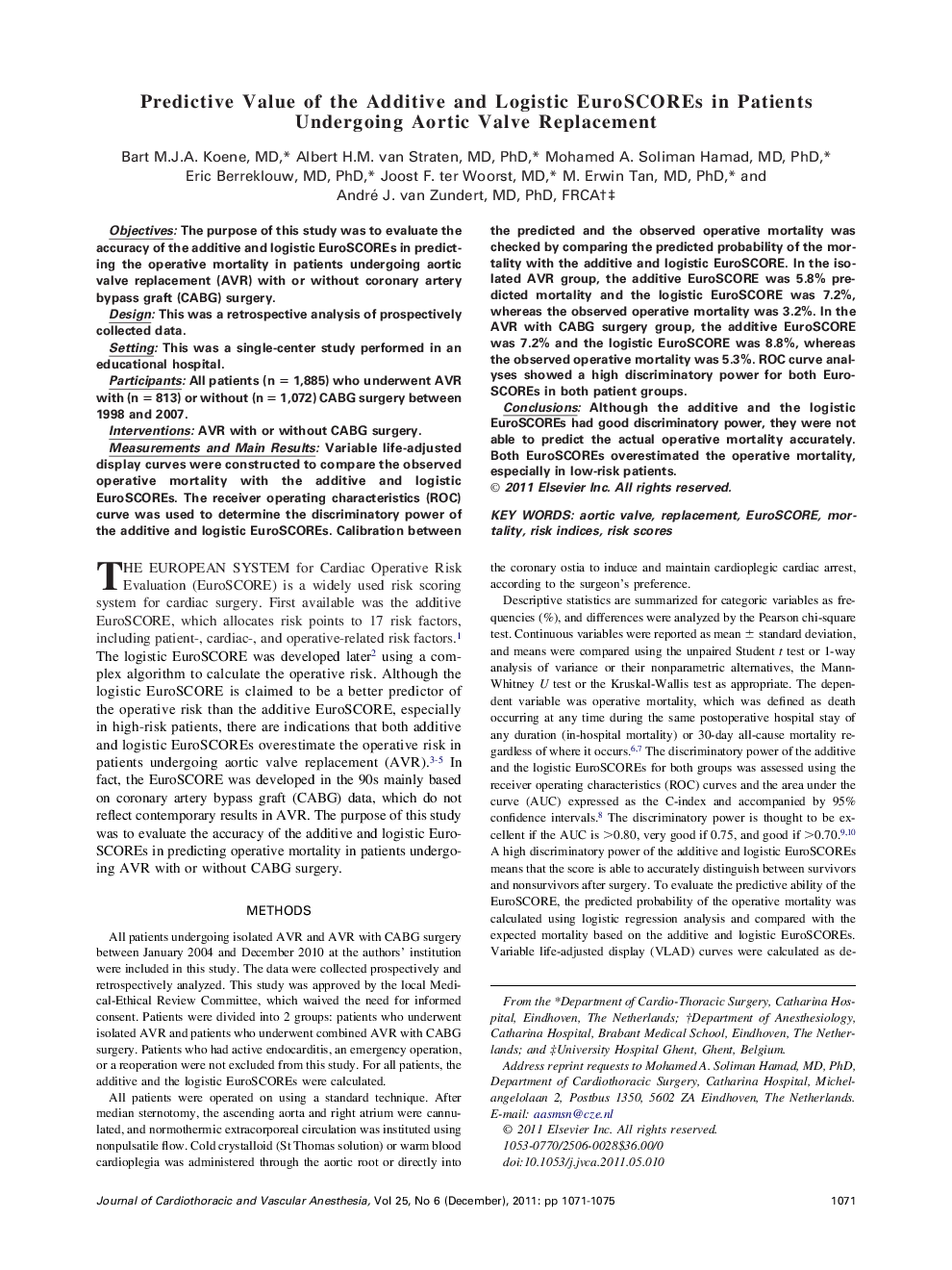| Article ID | Journal | Published Year | Pages | File Type |
|---|---|---|---|---|
| 2760870 | Journal of Cardiothoracic and Vascular Anesthesia | 2011 | 5 Pages |
ObjectivesThe purpose of this study was to evaluate the accuracy of the additive and logistic EuroSCOREs in predicting the operative mortality in patients undergoing aortic valve replacement (AVR) with or without coronary artery bypass graft (CABG) surgery.DesignThis was a retrospective analysis of prospectively collected data.SettingThis was a single-center study performed in an educational hospital.ParticipantsAll patients (n = 1,885) who underwent AVR with (n = 813) or without (n = 1,072) CABG surgery between 1998 and 2007.InterventionsAVR with or without CABG surgery.Measurements and Main ResultsVariable life-adjusted display curves were constructed to compare the observed operative mortality with the additive and logistic EuroSCOREs. The receiver operating characteristics (ROC) curve was used to determine the discriminatory power of the additive and logistic EuroSCOREs. Calibration between the predicted and the observed operative mortality was checked by comparing the predicted probability of the mortality with the additive and logistic EuroSCORE. In the isolated AVR group, the additive EuroSCORE was 5.8% predicted mortality and the logistic EuroSCORE was 7.2%, whereas the observed operative mortality was 3.2%. In the AVR with CABG surgery group, the additive EuroSCORE was 7.2% and the logistic EuroSCORE was 8.8%, whereas the observed operative mortality was 5.3%. ROC curve analyses showed a high discriminatory power for both EuroSCOREs in both patient groups.ConclusionsAlthough the additive and the logistic EuroSCOREs had good discriminatory power, they were not able to predict the actual operative mortality accurately. Both EuroSCOREs overestimated the operative mortality, especially in low-risk patients.
